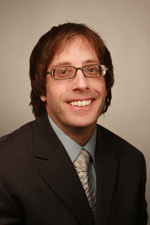
Walking into Andrew Zieffler’s office, I can’t help but wonder about the signed Dawson’s Creek posters on his wall, “What’s the story behind those?” I ask. “Back when I was teaching high school math, talking about Dawson’s Creek was a way to connect with my students.” Zieffler explains. “And over time, I became a fan of the show.”
Zieffler didn’t always see teaching as his calling. “My dad was a high school math teacher,” he says. “It was the one thing I didn’t want to do.”
Starting out as an undergraduate, Zieffler planned to become an engineer but ended up changing his major seven times. “I was history major for awhile, a German major for awhile. I was going get a degree in math but got talked into also majoring in education,” he recalls.
After graduation, Zieffler taught AP statistics and various math courses in a high school for four years. “I enjoyed teaching high school a lot,” he says. “The teaching, coaching, and getting to know kids was great.”
Four years into teaching, Zieffler began looking for a new challenge. Initially, he wanted to study math history at Brown—that is until he met professor of educational psychology, Joan Garfield. On a whim, Zieffler drove down from St. Cloud to visit the College of Liberal Art’s Math Department. When he mentioned his interest in statistics education, they referred him to Garfield.
Garfield was the mastermind behind the statistics education track in the quantitative methods in education program, and her passion inspired Zieffler to choose another path. “Joan and I talked for what must have been three hours, and my back-up school suddenly became my first choice,” he says.
Zieffler graduated with his Ph.D. in educational psychology. Now a senior lecturer in the Department of Educational Psychology’s Quantitative Methods in Education program, he teaches graduate level courses in statistics. Zieffler also oversees a group of graduate students who teach an undergraduate Basic and Applied Statistics course. “I work with graduate students to teach and write curriculum based on what we know about how people learn statistics,” he says.
In addition to his teaching responsibilities, Zieffler conducts research and outreach in over a dozen area schools where he leads the College in the Schools (CIS) program for statistics. CIS is a nationally accredited program that brings U of M faculty together with high school teachers to offer University courses in high schools.
“Most mathematics teachers have only had one or two college courses in statistics, and they’ve never had classes in pedagogy,” Zieffler says. As part of the program, he and his students study teachers’ understanding of different concepts in statistics and how it affects student learning. From there, they make recommendations for teacher professional development.
Just as Dawson’s Creek grew on him, so did teaching. “The most exciting part about of what I do is working with students,” he says. “It’s fun to see them grow and make connections between different concepts to solve problems.”



